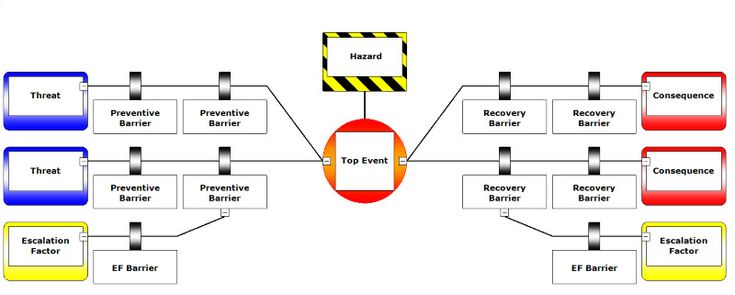Understanding Bow-Tie Risk

Introduction:
Effective risk management is pivotal to the success and sustainability of organizations across various industries. One highly effective method for assessing and mitigating risks is bow-tie risk analysis. In this post, we will provide an overview of bow-tie risk analysis, highlighting its key components and benefits.
What is Bow-Tie Risk?
Bow-Tie Risk Management is a comprehensive risk analysis and mitigation technique that enables organisations to identify and manage potential risks effectively. This method utilizes a visual representation, resembling a bow-tie, to illustrate the relationship between various risk factors and the corresponding control measures.
The Structure of a Bow-Tie Diagram:
The bow-tie diagram consists of four key components:
- The Hazard: This represents the potential threat or event that could cause harm, damage, or disruption to the organisation’s operations. It serves as the central focus of the diagram.
- Threats and Causes: On the left side of the diagram, threats and causes are depicted, outlining the factors that could lead to the occurrence of the hazard. This section helps identify the root causes and triggers of the risk.
- Consequences: The right side of the diagram represents the potential consequences that may arise if the hazard is realized. This includes both immediate and long-term impacts, such as operational disruptions, financial loss, reputational damage, or harm to individuals.
- Control Measures: The top and bottom parts of the diagram depict preventive measures (at the top) and mitigating measures (at the bottom). These controls are implemented to reduce the likelihood of the hazard occurring or to minimize its impact should it happen.
Benefits of Bow -Tie Risk:
- Enhanced Risk Awareness: Bow-tie diagrams provide a clear and concise visualisation of the risk landscape, enabling stakeholders to better understand the interdependencies between various risk factors and control measures. This promotes a comprehensive and proactive approach to risk management.
- Improved Risk Communication: Bow-tie diagrams simplify complex risk information, facilitating effective communication between different departments, teams, and stakeholders. They promote a shared understanding of risks, allowing for informed decision-making and collaboration.
- Holistic Risk Assessment: By mapping out causes, consequences, and control measures, organizations gain a holistic view of risks. This approach helps identify potential gaps in risk mitigation strategies and informs the allocation of resources to critical areas.
- Proactive Risk Mitigation: Bow-tie diagrams emphasize the importance of preventive measures, encouraging organizations to focus on reducing the likelihood of hazards occurring. This proactive approach enables organizations to be better prepared, reducing the likelihood and impact of potential incidents.
Conclusion:
Bow-tie risk analysis is a valuable risk assessment and management framework that empowers organisations to identify, analyze, and mitigate risks comprehensively. By visually mapping out hazards, threats, consequences, barriers, and escalation factors, organizations can proactively address potential incidents and ensure the resilience of their operations. Embracing the bow-tie risk approach enhances risk management practices, provides organisational resilience, and fosters a safety-oriented culture within an organisation.
